"Various family members are seen in the garden of a large house, possibly The Beeches. A woman and baby sit on a blanket in the middle of the lawn. A uniformed nanny joins them with another baby. Concludes with a shot of the two babies together on the blanket" (NWFA Online Database).
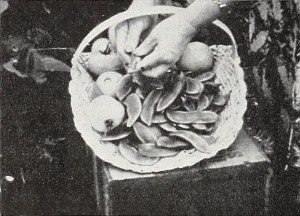
"With his victory garden as an incentive, George Mesaros has made Back to the Soil a record of his garden's progress that does credit to his movie making ability and to the quality of the vegetables produced. This genre little picture strikes a happy balance between the action scenes of planting, hoeing and harvesting and the magnificent shots of the opulent, colorful red tomatoes, green peppers, yellow corn and the beans, lettuce, cucumbers and other vegetables. Mr. Mesaros has a natural sense of pattern and design which he gives full play in the excellent arrangements in this film. Noteworthy, too, is the feeling of space and distance achieved in a small plot of ground. It is surprising to learn that the garden which seems so extensive in the picture is in reality only a small backyard plot." Movie Makers, Dec. 1942, 506.
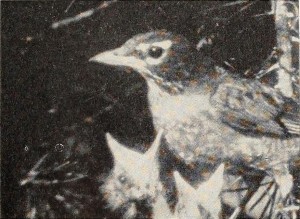
"Trim, tightly knit and altogether engaging, Backyard Birding presents, with affectionate attention to detail, a nature-loving father and his small son searching out the common and uncommon birds of their New England neighborhood. The film's pleasant music and informed but unassuming narrative are in sympathetic harmony with the pictorial whole. In it, with apparent purpose, Herbert D. Shumway has employed a cloudy-bright lighting throughout. Thus, the countless closeups of his bird neighbors, as they build their nests and rear their young, are in soft, true and unshadowed color — as so befits the film's gentle theme. And, just in case you're wondering, these superb scenes (on 8mm. film, remember) are beautifully sharp, despite the wider lens apertures which must have been used." Movie Makers, Dec. 1952, 324, 337.
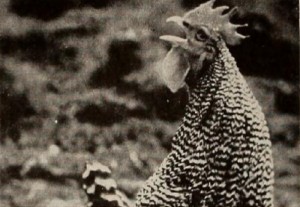
"There is an easy, effortless quality about Backyard Horizons, by Roy C. Wilcox, which tends to belie the fine competence of its work with telephoto lenses and extension tubes. The birds, bugs, bees and rabbits which parade across the horizon of the Wilcox pastures seem to be friends of the family — and they are treated as such in the unpretentious narrative which accompanies them. The sound on film track, combining simple musical selections and a restrained volume of comment, was itself produced by Mr. Wilcox, and it records his own voice, pleasingly." Movie Makers, Dec. 1946, 486, 488.
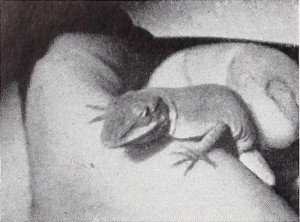
"To film an insect well, when it is crawling, creeping or flying, is a real feat. Francis M. Spoonogle does this with great success. In his film, Backyard Zoo, he has taken completely undirectable creatures and has managed to capture them on film with such intimacy as to give one the feeling that he might be living for a while in the insect world. Unsuspected beauty is revealed in the coloring of caterpillars with normally unseen fur collars. So sharply has he focused on insect life in this beautiful 8mm. film that the "feathers," making up the coating of a butterfly's wings, are almost discernible." Movie Makers, Dec. 1945, 495-496.
El filme muestra el proceso de realización de un anillo de bodas.
The film depicts the process of creating a wedding ring.
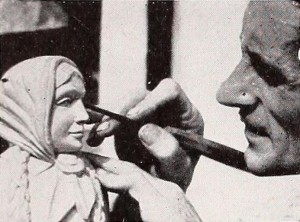
"Nine times a place winner in seven years of Ten Best competition, Frank E. Gunnell has probably done his best work to date in Baie St. Paul. The film is a bright and sunny visit to the little French Canadian parish of that name, nestling in parochial contentment along the St. Lawrence. Central in this existence stands the baroque and inevitable church, while about it one finds the familiar family names of the village butcher and baker, doctor and dressmaker, recurrent along the cobbled highways. Here too is an intent, sharp featured little woodcarver, a housewife coolly competent about her embroidery and an aloof mademoiselle who presides with dazzling beauty over an ancient spinning wheel. Packed with this essential human interest, Baie St. Paul was filmed with the sparkling competence that one has for years expected from a Gunnell production. Its editing fits shrewdly into the pastoral mood of the subject matter, while its titles, both in their wording and execution, are colorful and in good taste. Baie St. Paul should take a high and honored place in the Gunnell catalog of fine films." Movie Makers, Dec. 1944, 477.
"Ballerina is easily the most unusual film to be entered in the Competition in many years. Alise Ziverts the maker, has scratched the images on a piece of opaque 16mm film. Though the technique is not new, her masterful effort of depicting a man and a woman dancer with no more than a sharp needle is little less than amazing. With a screen time of one minute at 16 frames per second, this amounts to approximately 1000 separate drawings Miss Ziverts was required to make on the small frame area" PSA Journal, Sept. 1966, 35.
Bamboo of Japan is an 8mm film in color by Mr. Hutsutaro Kageyama of Kyoto, Japan. Bamboo to most of us means simply a fishing pole and not much more. Not so much in Japan. Bamboo is so much in demand there that bamboo tree plantations are quite prevalent. You will learn things about the use of bamboo that you never dreamed about of in the 22 minutes of this film. A very educational film and a credit to the country of its origin, Japan," PSA Journal, Mar. 1970, 43.
Total Pages: 203